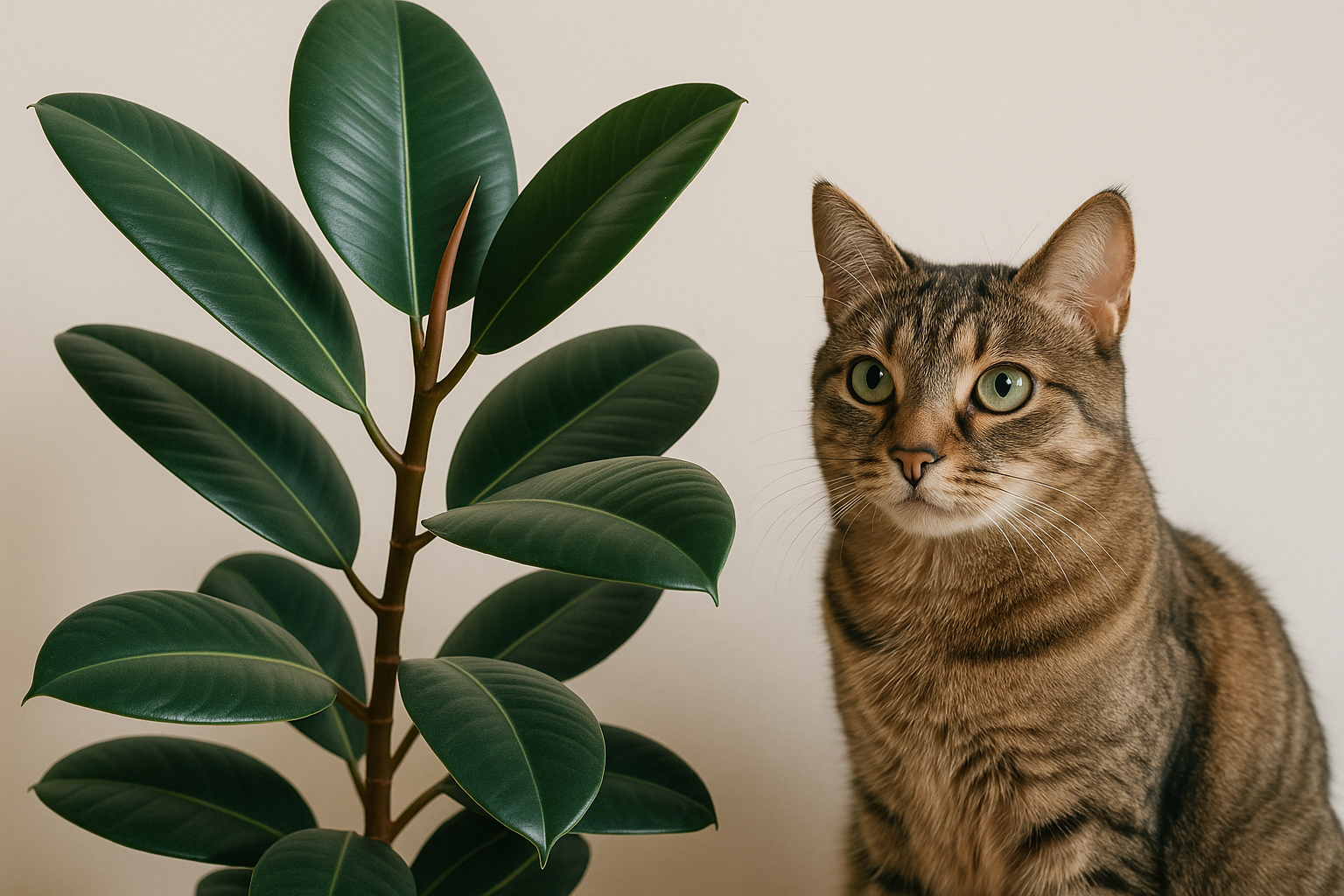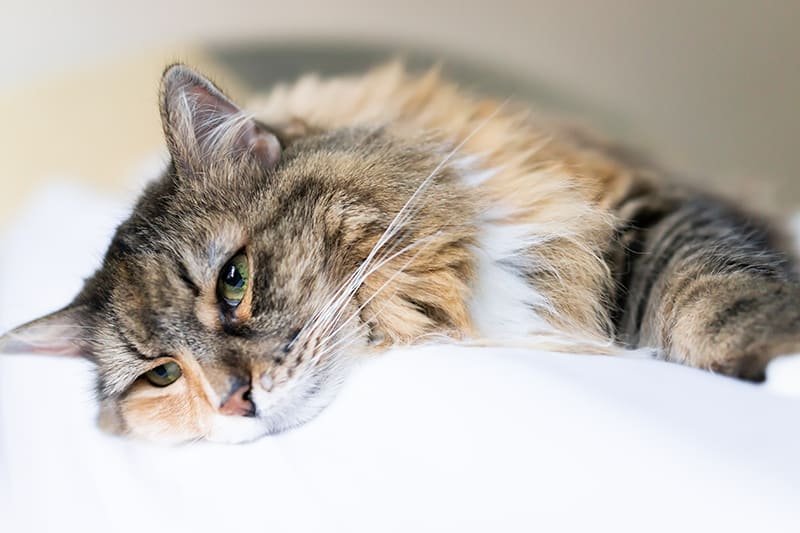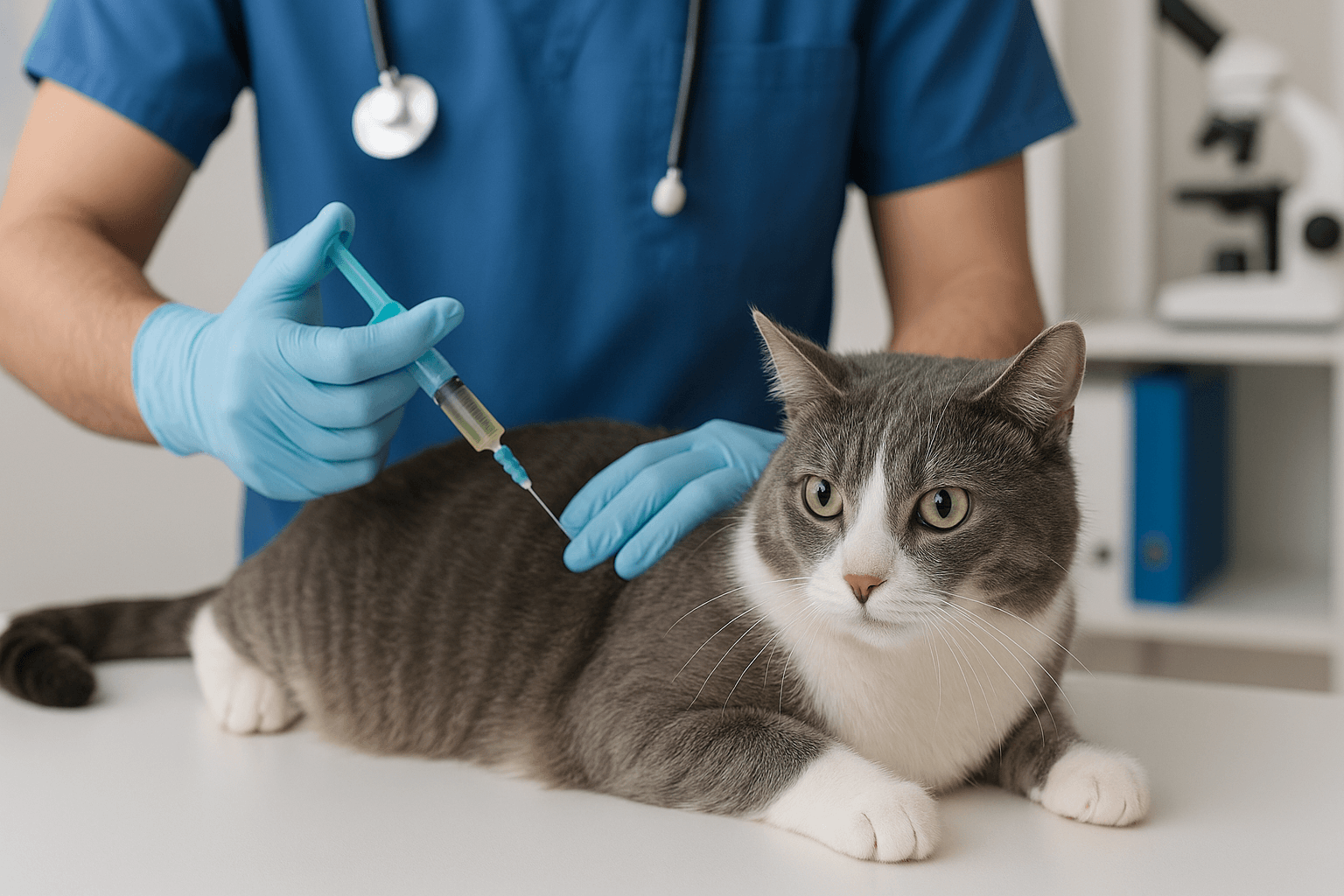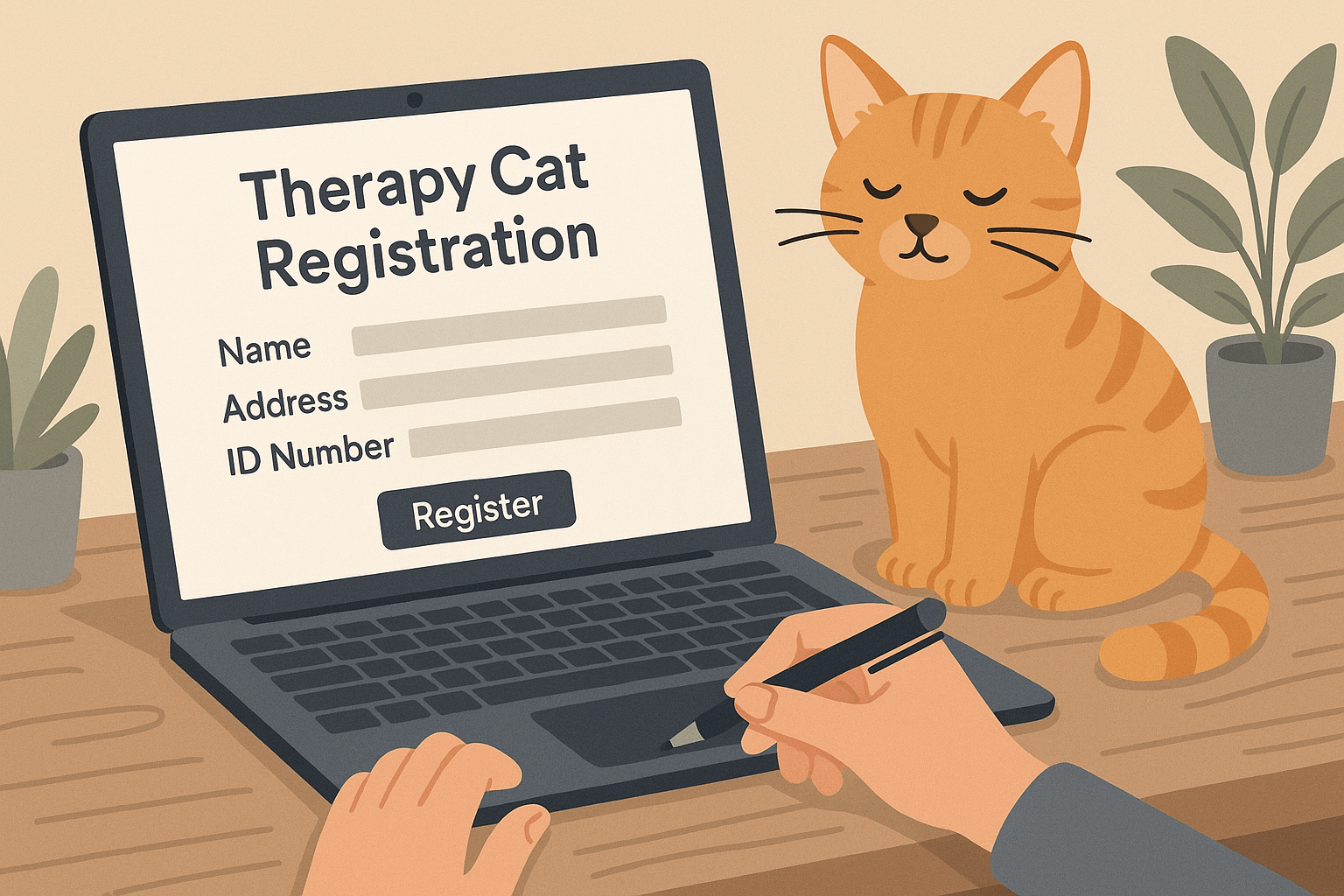Can Cats Eat Cereal?
Cereal is a popular breakfast choice for many humans, but what about our feline friends? If you’ve ever caught your cat eyeing your bowl of cereal or wondered whether it’s safe to share a bite, you’re not alone. While cats are obligate carnivores and thrive on a protein-rich diet, they may occasionally show interest in human foods like cereal. But is cereal safe for cats, or could it pose risks to their health? In this blog post, we’ll explore the topic in detail, covering potential dangers, safer options, and tips for keeping your curious kitty satisfied without compromising their well-being.
Potential Risks of Feeding Cereal to Cats
While cereal might seem harmless, certain ingredients and characteristics can make it unsuitable for cats. Understanding these risks will help you make informed decisions about your pet’s diet.
High Sugar Content:
Many cereals are loaded with sugar, which can lead to obesity, diabetes, and dental issues in cats.Artificial Additives:
Flavors, colors, and preservatives commonly found in cereal can upset your cat’s stomach or cause allergic reactions.Lactose Intolerance:
If you add milk to cereal, remember that most adult cats are lactose intolerant and may experience digestive upset.Choking Hazards:
Hard or crunchy cereal pieces can be difficult for cats to chew and swallow, increasing the risk of choking.Nutritional Imbalance:
Cereal lacks the essential nutrients cats need, such as taurine and animal-based proteins, making it an incomplete food source.
These risks highlight why cereal should never replace a balanced, species-appropriate diet for your cat.
Safer Alternatives to Cereal for Cats
If your cat shows interest in your breakfast, there are healthier and safer alternatives to satisfy their curiosity. These options align better with their dietary needs and preferences.
Plain Cooked Meat:
Small pieces of chicken, turkey, or beef (without seasoning) provide protein-rich treats that cats love.Cat-Safe Fruits:
Offer small portions of cat-friendly fruits like watermelon or blueberries as occasional snacks.Specialized Cat Treats:
Commercial cat treats are designed to meet feline nutritional requirements while offering variety.Homemade Cat Food:
Prepare simple, vet-approved recipes using ingredients like cooked fish or pureed vegetables.Bone Broth:
Strained, sodium-free bone broth is a hydrating and nutritious option for cats.
These alternatives ensure your cat enjoys tasty treats without compromising their health.
Check this guide 👉Can Cats Eat Honeydew? Best 7 Expert Tips!
Check this guide 👉Can Cats Eat Mustard? Best 7 Expert Tips!
Check this guide 👉Can Cats Eat Dill? Best 7 Expert Tips!
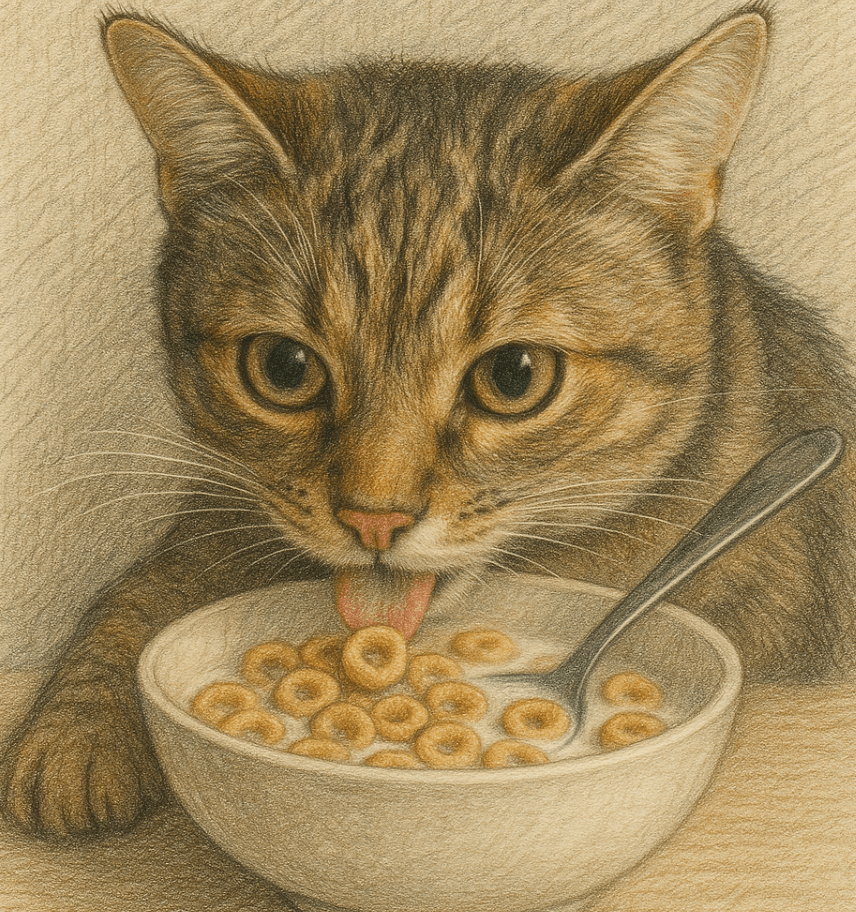
Safe Foods for Cats | Unsafe Ingredients in Cereal |
|---|---|
Plain cooked chicken or turkey | High sugar content |
Cat-safe fruits (e.g., blueberries) | Artificial flavors and colors |
Bone broth (unsalted) | Milk and dairy products |
Specialized cat treats | Choking hazards from hard textures |
Homemade protein-based snacks | Nutritional imbalance |
Signs Your Cat May Be Sensitive to Human Foods
Even if you offer small amounts of cereal or other human foods, some cats may react negatively. Watch for these signs to identify potential sensitivities.
Vomiting or Diarrhea:
Digestive upset is a common reaction to foods that cats cannot properly digest.Excessive Drooling:
Drooling can indicate nausea or discomfort caused by unfamiliar or harmful foods.Loss of Appetite:
A sudden refusal to eat may signal that your cat feels unwell after consuming something new.Skin Irritation or Itching:
Allergic reactions to additives or ingredients can manifest as skin issues.Lethargy or Behavioral Changes:
Unusual tiredness or changes in behavior may point to an adverse reaction.
Recognizing these signs allows you to act quickly and prevent further complications.
Tips for Managing Your Cat’s Curiosity About Human Food
Cats are naturally curious, and their interest in your meals can be hard to ignore. Here are some tips to manage their curiosity safely.
Set Boundaries Early:
Train your cat to stay away from your plate by redirecting them with toys or treats.Provide Distractions:
Keep your cat occupied with interactive toys or puzzle feeders during mealtime.Avoid Reinforcing Begging Behavior:
Never reward begging with food, as this encourages unwanted habits.Offer Cat-Friendly Snacks Instead:
Provide healthy alternatives that cater to their taste preferences and dietary needs.Supervise Shared Meals:
If you do share food, ensure it’s safe and given in moderation under close supervision.
By setting boundaries and offering appropriate snacks, you can keep your cat happy and healthy.
Common Mistakes to Avoid When Feeding Cats Human Food
Feeding cats human food requires caution to avoid unintended consequences. Here are some common mistakes to steer clear of.
Assuming All Human Foods Are Safe:
Many foods, including chocolate and onions, are toxic to cats and should never be shared.Overlooking Portion Sizes:
Even safe foods can cause harm if given in excessive amounts; moderation is key.Ignoring Individual Sensitivities:
Some cats may have allergies or intolerances to specific ingredients, so monitor reactions closely.Using Spices or Seasonings:
Salt, garlic, and other seasonings can irritate your cat’s digestive system or worse.Neglecting Veterinary Advice:
Always consult your vet before introducing new foods to ensure they’re appropriate for your cat.
Avoiding these mistakes ensures your cat stays safe and healthy.
Understanding Your Cat’s Natural Diet Preferences
Cats are obligate carnivores, meaning their bodies are designed to thrive on a meat-based diet. Understanding their natural preferences helps explain why cereal isn’t ideal.
High Protein Needs:
Cats require diets rich in animal-based proteins to support muscle development and overall health.Limited Carbohydrate Tolerance:
Unlike humans, cats lack the enzymes needed to efficiently process large amounts of carbs.Essential Nutrients Like Taurine:
Found primarily in meat, taurine is critical for heart, vision, and reproductive health in cats.Hydration Through Food:
Cats often derive moisture from their prey; wet food or broths mimic this natural hydration source.Instinctual Hunting Behavior:
Cats are drawn to foods that resemble their natural prey, such as small birds or rodents.
By catering to these instincts, you can provide a diet that aligns with their biology.
Fun Ways to Include Your Cat in Mealtime Safely
If you want to involve your cat in your mealtime routine, here are some creative and safe ideas to try.
Dedicated Cat Snack Bowls:
Set aside a small bowl with cat-safe snacks to give them a sense of inclusion.Interactive Feeding Toys:
Use puzzle feeders or treat-dispensing toys to engage your cat during your meals.Homemade Cat Treat Recipes:
Prepare simple, vet-approved treats using ingredients like cooked salmon or pumpkin puree.Scheduled Treat Times:
Establish a routine where your cat receives a special snack at the same time as your meals.Positive Reinforcement Games:
Reward your cat with treats or playtime instead of sharing your food directly.
These activities foster bonding while keeping your cat’s diet safe and nutritious.
Frequently Asked Questions About Cats and Cereal
Is it okay to give my cat plain cereal?
Plain cereal without added sugars or flavors is less harmful, but it still lacks nutritional value for cats.
Can kittens eat cereal?
No, kittens have specific dietary needs that cereal cannot meet; stick to kitten-formulated food.
What happens if my cat eats sugary cereal?
Sugary cereal can cause digestive upset, weight gain, or long-term health issues like diabetes.
Are oat-based cereals safe for cats?
Plain oats are not toxic, but they offer little nutritional benefit and should only be given sparingly.
How can I stop my cat from begging for cereal?
Redirect their attention with toys or treats, and avoid reinforcing begging behaviors with food.
Prioritizing Your Cat’s Health Over Curiosity
While it’s tempting to share your cereal with your cat, their unique dietary needs must always come first. Cereal offers little nutritional value and can pose significant risks, especially when laden with sugar, artificial additives, or dairy. By understanding the potential dangers and exploring safer alternatives, you can ensure your cat stays healthy and satisfied. Remember, your feline friend relies on you to make the best dietary choices for them—so always prioritize their well-being over momentary indulgence. With a little creativity and care, you can find ways to include your cat in mealtime fun without compromising their health.
Is the Rubber Tree Cat Safe? Best 7 Expert Tips! Discover expert advice on keeping rubber plants safely in cat-friendly homes and learn top tips for pet-safe plant care.
Low Red Blood Cell Count in Cats: Best 7 Expert Tips! Discover causes, symptoms, and treatment options for feline anemia. Learn how to support your cat’s health effectively with expert advice.
Understanding Megacolon Treatment: Best 7 Expert Tips! Discover effective strategies to manage feline megacolon, from dietary changes to surgical options, ensuring your cat’s comfort and long-term health.
How to Register a Therapy Cat: Best 7 Expert Tips! Discover essential steps to certify your cat as a therapy animal, prepare them for training, and make a meaningful impact in therapeutic settings.

